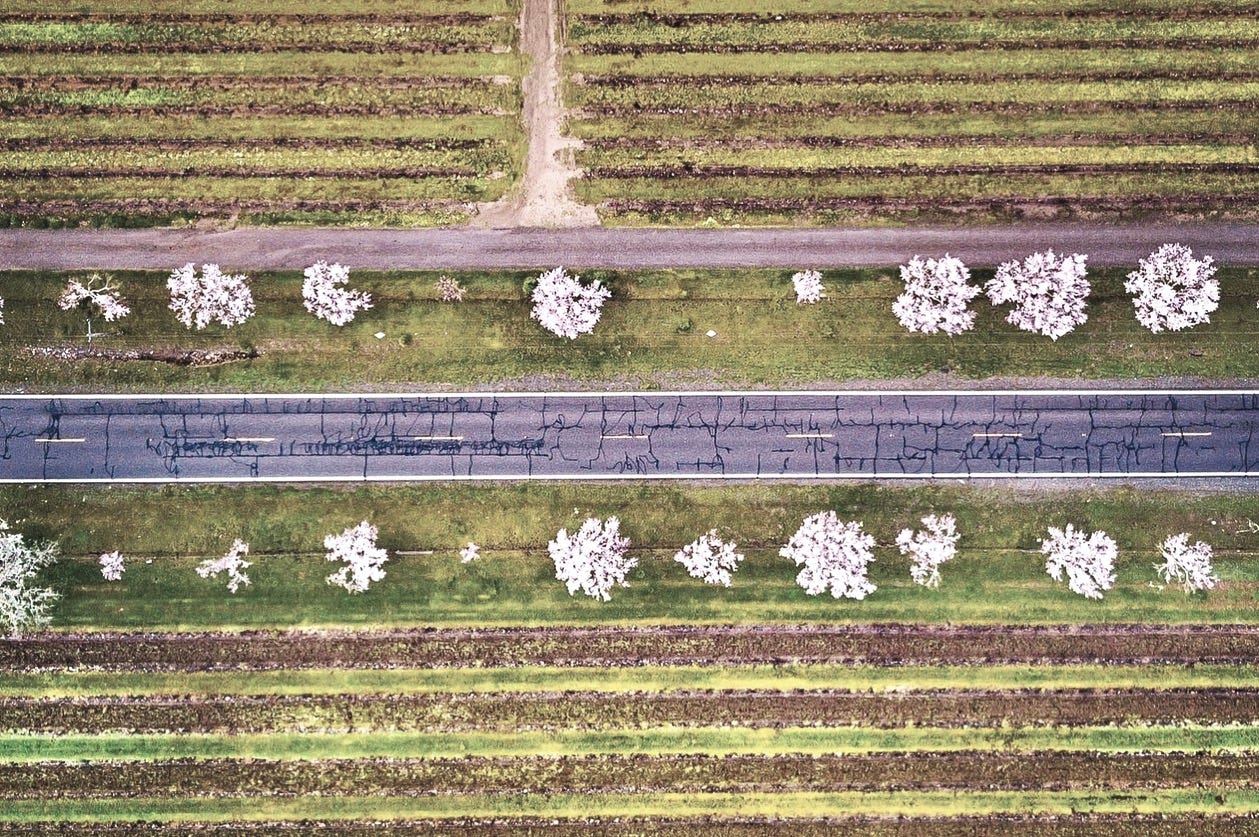Your Support Keeps Us Going
Local. Independent. Funded by you.
If you’re already a paid subscriber — thank you. If not, now’s the time. Help keep independent journalism alive.
The Spotlight
Welcome to Under the Hood, our exclusive Saturday series for Napa Valley Features paid subscribers. Today we reflect on three years of reporting — and why supporting and defending local news is more urgent than ever.
We’re also diving into the latest data from our readers’ polls and providing insights from our economic dashboard, covering local Napa Valley, U.S. and global markets.
In addition, we feature "What We Are Reading," a section with a handpicked list of recent articles that provides a variety of viewpoints on issues important to our community and beyond.
“What We Are Reading” quotes of the day:
"By 2027, global GDP growth is expected to average just 2.5 percent in the 2020s — the slowest pace of any decade since the 1960s." – from Indermit Gill, in "Global Economic Prospects, June 2025," World Bank.
“The new guidelines are set to move away from suggesting consumers limit alcohol consumption to a specific number of daily servings ... [but are] expected to include a statement encouraging Americans to drink in moderation or limit alcohol intake due to associated health risks,” – from Jessica DiNapoli in "Exclusive: US to drop guidance to limit alcohol to one or two drinks per day, sources say," Reuters.
"A palpable, tense, and uneasy stillness hangs over those in Latino communities … who are now grappling with fear, uncertainty, and the very real risk that showing up to work could lead to arrest and deportation." – from Ana Carolina Quintela in "California’s wine communities face deeply human costs amid Trump’s immigration raids," Decanter.
“We are bringing a whole new demographic to fine wine, some of whom do not fit the classic profile of a fine wine collector or investor” – from Callum Woodcock in "How WineFi Is Shaking Up The Wine Investment Space," Forbes.
“He does not fit the profile that is being fed to the American people right now” – from Rollin Soles in "Newberg man seized by ICE officers on Thursday," The Newberg Graphic.
“[This] really, really hurts. Meininger’s was important in being a venue for real information and clear-eyed opinion,” from Paul Tincknell in "Loss of an Icon: Meininger’s International Shuts Down," Wine Industry Advisor.
“Today the average winery sells 70% of its production direct and does so with greater control over their brand and sales channel” – from Rob McMillan, in "2025 Direct-to-Consumer Wine Report," SVB Wine Division.
“We believe in the power of education and fun to ignite the next generation of wine consumers at every age” – from Jean-Charles Boisset in "Free Wine Is An Answer To the Demand Problem," Tom Wark's Fermentation: The Daily Wine Blog.
“If we’re not spending that money on insurance, we need to spend what we can afford on making ourselves safer” – from Cyril Chappellet, in "They can’t get fire insurance. So California wineries are seeking out fire trucks and military tech," San Francisco Chronicle.
"Unemployment claims filed by veterans rose for the week ending June 7, with 404 initial claims (up 23.2% week over week) and 4,351 continued claims (up 2.7% week over week)," — U.S. Department of Labor, June 18, 2025 release.
"I’m sickened by Senate Republicans’ proposal to put over 250 million acres of our public lands up for sale" – from Mike Thompson, in "Thompson Reacts to Proposed Sale of Public Lands: 'Betrayal of the American People'," Office of Rep. Mike Thompson.
"U.S. total construction spending posted a rare 0.5% year-over-year decline in April 2025, marking the first negative growth since 2019 and signaling a notable slowdown in the sector." — U.S. Census Bureau via FRED
“I have no idea how long I’m gonna be shut down for. Trump can say a lot of things (about pausing ICE raids) but he has also said he wants to do the biggest mass deportations in history” – from Adriana Gomez Salazar in "From San Diego to the Bay Area, California restaurants are on edge over immigration raids," CalMatters.
“Misleading information has undermined public trust in climate science and other key social institutions. This crisis of information integrity is intensifying and exacerbating the climate crisis.” – from "This is what we're up against," The Guardian.
“The lesson of the 1970s was that if Watergate and Vietnam taught Americans that governments lie, then the failure to solve the energy crisis taught them that government was ineffective” – from Meg Jacobs in "Why Higher Oil Prices May Not Change U.S. Energy Policy," The New York Times.
“This represents racial discrimination and discrimination against America’s LGBTQ community. I would be blind not to call it out” – from Judge William Young who was appointed by Republican President Reagan, in "Judge rules against NIH grant cuts — and calls them discriminatory," Nature.
Year Three in a Fractured News Landscape
By Tim Carl
NAPA VALLEY, Calif. – Napa Valley Features quietly turned 2 last month. We didn’t throw a party or publish a retrospective. We just kept doing the work — reporting stories, following data, asking hard questions and trying to make sense of Napa Valley, a place whose shifts often echo beyond the region and hint at what may come elsewhere.
Now, as we enter our third year, the context has changed — fast. The collapse of local news is accelerating. A dangerous trend in a time of rising uncertainty and upheaval.
A New Wave of Ownership, A Familiar Playbook
Over the past year, two major shifts further rocked the North Bay’s already fragile media landscape. The Santa Rosa Press Democrat — a longtime journalistic pillar in the region and a Pulitzer Prize-winning newspaper — was sold by Sonoma Media Investments to MediaNews Group, a subsidiary of Alden Global Capital. Alden, a hedge fund with a national reputation for acquiring newspapers and implementing deep newsroom cuts, quickly offered voluntary buyouts to reporters and other staff within weeks of the sale. Although layoffs had not been officially announced as of June 2025, many employees and union leaders expressed concern that staff reductions were likely, given Alden’s track record at other publications.
Several months earlier, the Napa Valley Register — along with the St. Helena Star and Inside Napa Valley magazine — was acquired by Hoffmann Media Group, part of billionaire David Hoffmann’s Florida-based business empire. Hoffmann Media Group also owns publications such as Florida Weekly (with editions in six Florida markets), covering more than 30 markets across Florida, Michigan and California. While the Hoffmann family has experience operating local newspapers, their primary business interests are in a wide range of industries, including real estate, hospitality, manufacturing, transportation, agriculture, aviation, financial services and private equity. The sale was accompanied by general assurances of commitment to local journalism and the promotion of Dan Evans to editor and publisher but came without detailed explanation of editorial direction, significant management changes or a clear outline of the Register’s future civic role.
Different buyers. Same likely trajectory: consolidation, reduced independence and increased vulnerability to outside agendas.
As we wrote earlier, this is media fracking — an extractive process in which corporations or wealthy individuals purchase local news operations not to build community, but to mine them for attention, influence and profit. The results are predictable: Ad revenue is pulled from the community, assets are sold off, generic syndicated content replaces local reporting, “efficiency” cuts jobs and independence, and profits are funneled to distant owners. What remains is often a hollow shell of what had been a trusted institution — newsrooms without roots.
National Trends: The Numbers Are Grim
Since 2005, about 3,300 newspapers have disappeared in the United States — roughly one-third of all local outlets.
In 2023 alone, the closure rate hit 2.5 newspapers per week, one of the highest in recent history. Just 6,000 newspapers remain — and more than 80% are weeklies, often operating with skeletal staff and limited reach.
According to Northwestern’s Medill School of Journalism report:
More than half of the nation’s 3,143 counties have little to no local news.
More than 7,000 newspaper jobs vanished between 2022 and 2023, compared to a few hundred the year before.
The number of true “news deserts” — counties with zero local news outlet — rose to 208 in just one year, affecting nearly 55 million Americans
This isn’t just a media issue. It’s a democracy issue.
When Local News Collapses, So Does Civic Life
Since 2004, the number of U.S. newspaper journalists has dropped by 47%, with more than 43,000 newsroom jobs eliminated.
The consequences are measurable:
Local political awareness and voter turnout decline when local news disappears.
Split-ticket voting drops, as residents fall back on national, partisan media.
Government accountability erodes, with fewer reporters scrutinizing budgets, policies and public officials.
Civic trust plummets, especially in rural and low-income communities left without watchdogs.
Despite these risks, only 15% of Americans reported paying for local news in the past year — even though 85% said they consider local journalism vital to their community’s well-being.
What We’re Trying to Build
When we launched Napa Valley Features in May 2023, we didn’t expect to become one of the few truly independent, conflict-free newsrooms in the region.
But here we are — and we intend to keep doing the work.
We’ve turned down advertorial deals. Refused pay-for-play stories. Said no to PR-driven “partnerships.” We pay for the wine we review. We pay for our own meals at restaurants we cover. We do not trade in favors, privilege or pressure. We’ve been told to “get with the program” or “be more positive.” We’re not on many party lists. We’ve asked hard questions, taken unpopular positions and let the reporting speak for itself.
In a world increasingly shaped by partisanship and blurred lines between opinion and fact, we’ve worked to maintain an objective, community-centered voice.
Over the past two years, we’ve:
Published more than 800 original stories, photo essays, columns and cartoons.
Reached 5,000 subscribers, including 1,000 paid members.
Featured more than 40 local contributors, including investigative reporters, veteran journalists, writers and scientific experts.
Produced hundreds of data visualizations and dozens of “Under the Hood” deep-dive columns.
Operated with 100% reader funding — no ads, no venture capital, no private equity.
We’re not the only voice in the region. But increasingly, we’re one of the few without strings attached.
Journalism That Doesn’t Extract — It Connects
Media fracking strips communities of their ability to understand themselves. It treats information as a resource to be harvested, not cultivated. What we’re doing here — slowly, imperfectly at times, deliberately — is something different.
We’re building a journalism model rooted in place. One that stays focused on local policy, real people, cultural memory and data — even if that doesn’t trend on social media. One that doesn’t just survive, but works to earn your trust.
As we begin our third year, our mission remains:
Show up.
Tell the truth without fear.
Stay accountable only to our readers.
If you’ve read us, shared our work or subscribed — thank you. You’re the reason we exist.
If you haven’t supported us yet, consider doing so now. Not as charity, but as civic infrastructure. The same way you might support a fire department or a library.
Because when local news is fracked and fails, it’s not just headlines we lose.
It’s the ability to see clearly.
To participate meaningfully.
To hold power to account.
And to stay connected — as neighbors, citizens and a community.
If we can grow, we’ll expand our coverage — local sports, city council meetings, more neighborhood stories, more voices. More of what matters.
We’re not ready to let this go. Not here. Not now.
—
Tim Carl is a Napa Valley-based photojournalist.



